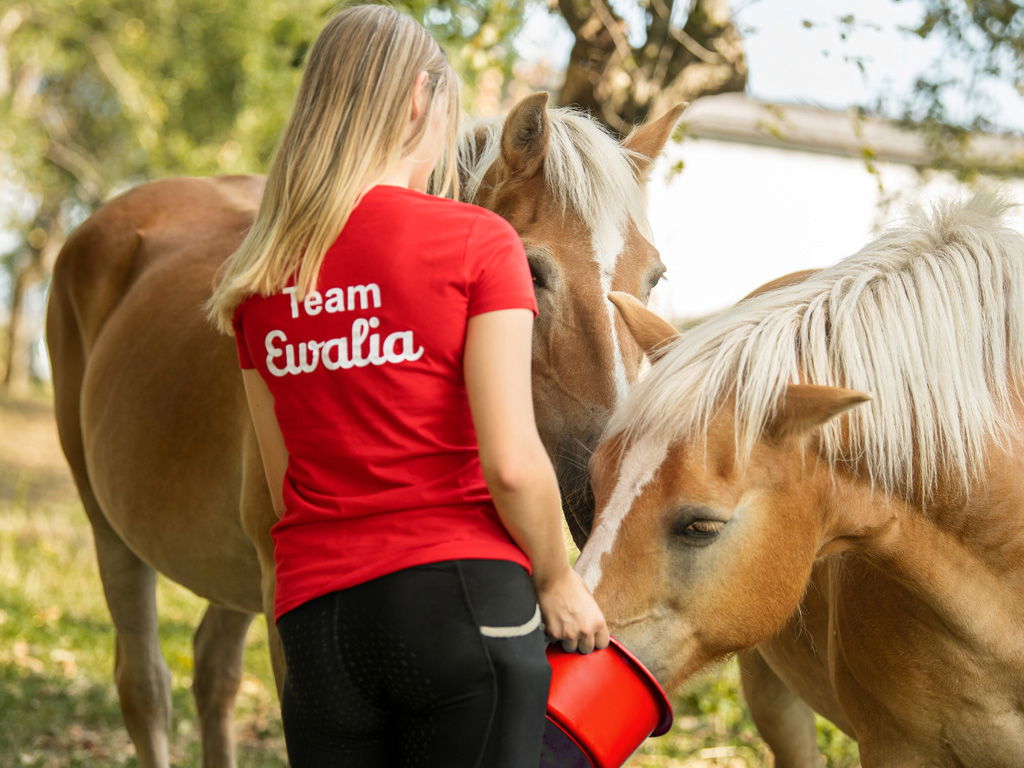Siberian Ginseng

Siberian ginseng, also called Taiga root (Eleutherococcus senticosus), devil's bush or eleuthero, is widely known for its performance boosting, immunomodulatory and adaptogenic effects. Russian folk medicine has long made use of this strengthening miracle root. Its performance-boosting effectiveness in humans and animals was proven in Soviet studies in the 1950s. However, the export of Siberian ginseng was banned because the Soviets wanted to have this miracle plant's benefits all to themselves. It was even used by the Soviet Olympic team as a natural doping substance. Today, the world is supplied with this medicinal plant and its extracts from the regions of China, Korea, and Russia.
Where does Siberian ginseng come from and what does it look like?
Siberian ginseng is native to the boreal coniferous forests of eastern Siberia. The range extends to Japan, South Korea, and China's northern provinces, where the plants are now also cultivated on a large scale. Siberian ginseng, like ginseng and ivy, belong to the Araliaceae family of plants. Their relationship is also reflected in their umbel-like flowers, which after pollination form berry-like, blue-black fruits similar to the fruits of ivy. The deciduous shrub often grows to a height of 3 metres, rarely higher. It is densely covered with small thorns right up to the petioles, hence its Latin name senticosus ("thorny"). The finely serrated leaves are petiolate and grow in groups of five. However, it is the below-ground part of the plant, the beet's cylindrical root stock, that is used.
How is Siberian ginseng used?
The Herbal Medicinal Product Committee (HMPC) has classified Siberian ginseng as a traditional herbal medicine. Medically recognised areas of application include helping to maintain and activate the body's own resistance to extraordinary stress. Germany's "Commission E" advisory board recommended Siberian ginseng as a tonic to fight fatigue and weakness, to boost concentration and performance, and for convalescence. The European Scientific Cooperative on Phytotherapy (ESCOP) recommended Siberian ginseng for mental and physical weakness, exhaustion, fatigue, and loss of concentration.
Siberian ginseng is traditionally used to alleviate the symptoms of weakness. It is generally said to have astringent, stimulating, immunomodulatory, antiviral, hypoglycaemic, anti-inflammatory and adaptogenic properties. Numerous studies confirm its benefits on our immune systems. Tests involving extracts from the plant's root and bark showed different results regarding their respective effects on the immune system. The bark extracts also affected the signalling pathways of our immune cells, but the root extracts had much higher effects on inflammatory processes. In animal models, administration of Siberian ginseng also significantly prolonged performance in mice.
In traditional Chinese medicine, Siberian ginseng is said to have anti-rheumatic, spasmolytic, antispasmodic, analgesic, adaptogenic and aphrodisiac properties. Here as well, it is mainly used to increase stress tolerance and for its vitalising effects. Siberian ginseng root has a sharp taste that is both bitter and sweet. It supports function of the lungs, liver, kidneys, spleen, and heart. It tones the Qi of these functional systems and is used to treat chronic diseases, for surgical post-treatment, for lack of stamina and reduced vitality, general weakness, tiredness, fatigue, exhaustion, concentration and sleep disorders, and immune deficiencies and as a concomitant therapy for chemotherapy or radiation therapy. Siberian ginseng is also used in traditional Chinese medicine for susceptibility to infection, immune deficiency, adjustment difficulties, and various stresses and strains, as well as for circulatory disorders and a variety of musculoskeletal problems.
For a long time only the root extracts were commercially available. It is therefore most commonly encountered as tinctures sold as drops but also as dry extracts in capsule form. The dried root can also be used to make tea, with infusions made from the dried, powdered root. Pour boiling water over it and allow to steep for 10 to 15 minutes. The daily recommended dose is three cups over the course of the day. But use caution if you have high blood pressure! Due to a lack of sufficient studies, administration to children under the age of 12 is not recommended. Possible side effects from overdose include insomnia, irritation, heart palpitations, and headache. Interactions with antidiabetics, barbiturates, and antithrombotics have also been observed in isolated cases.
What are the active substances in Siberian ginseng?
The dried, cut, or ground root (Eleutherococcus radix) is used in pharmaceuticals. The European Pharmacopoeia requires minimum amounts of specific eleutherosides. This involves a mixture of active ingredients from different substances of glycosides but also saponins, which are responsible for the primary effects. The collective term "eleutherosides" is misleading, as it does not refer to a uniform combination of active substances. Eleutheroside B, for example, is also called syringin – a phenylpropanoid which is also found in the bark of the lilac. It also contains lignans, coumarins, triterpene saponins, cardioactive steroid glycosides and mucus-forming polysaccharides.
What can Siberian ginseng be used to treat in horses and dogs?
For both humans and animals, Siberian ginseng can be used as a tonic, to strengthen and boost general performance and for in convalescence, including for elderly animals. Siberian ginseng can especially provide support in times of increased stress, including stress-related situations such as moving yard or when fireworks are set off, for recovery after illness or surgery, or to boost the immune system. In clinical studies on mice, its administration significantly increased the body's non-specific resilience in situations involving stress and fatigue. The animals showed increased performance in swimming tests along with a positive effect on the immune system. Siberian ginseng thus seems to have a far-reaching potential for humans and animals for promoting and maintaining health, enhancing performance both physically and mentally, and boosting well-being in periods of illness as well as in old age.
Sources
- https://www.pharmawiki.ch/wiki/index.php?wiki=Taigawurzel
- https://de.wikipedia.org/wiki/Borstige_Taigawurzel
- https://www.phytodoc.de/heilpflanzen/taigawurzel
- https://arzneipflanzenlexikon.info/taigawurzel.php
- https://www.therapeutika.ch/Eleutherococcus+senticosus
- Heilpflanzenkunde für die Veterinärpraxis (Springer 978-3-622-48794-5)
- Praxisbuch: Westliche Heilkräuter und chinesische Medizin (978-3-901618-84-0)
- https://ptaforum.pharmazeutische-zeitung.de/ausgabe-012016/unterstuetzung-fuer-die-koerperpolizei/
Studies
- https://pubmed.ncbi.nlm.nih.gov/32065954/
- https://www.sciencedirect.com/science/article/pii/S0944711320300143?via%3Dihub
- https://pubmed.ncbi.nlm.nih.gov/18607235/
- https://pubmed.ncbi.nlm.nih.gov/20920564/
- https://www.sciencedirect.com/science/article/abs/pii/S0378874104004234?via%3Dihub













